Weekly Tech Recap - № 198 - Nemeio keyboard, Area-51m, Intel Ice Lake, Lovot, Smart Sofa

Nemeio keyboard
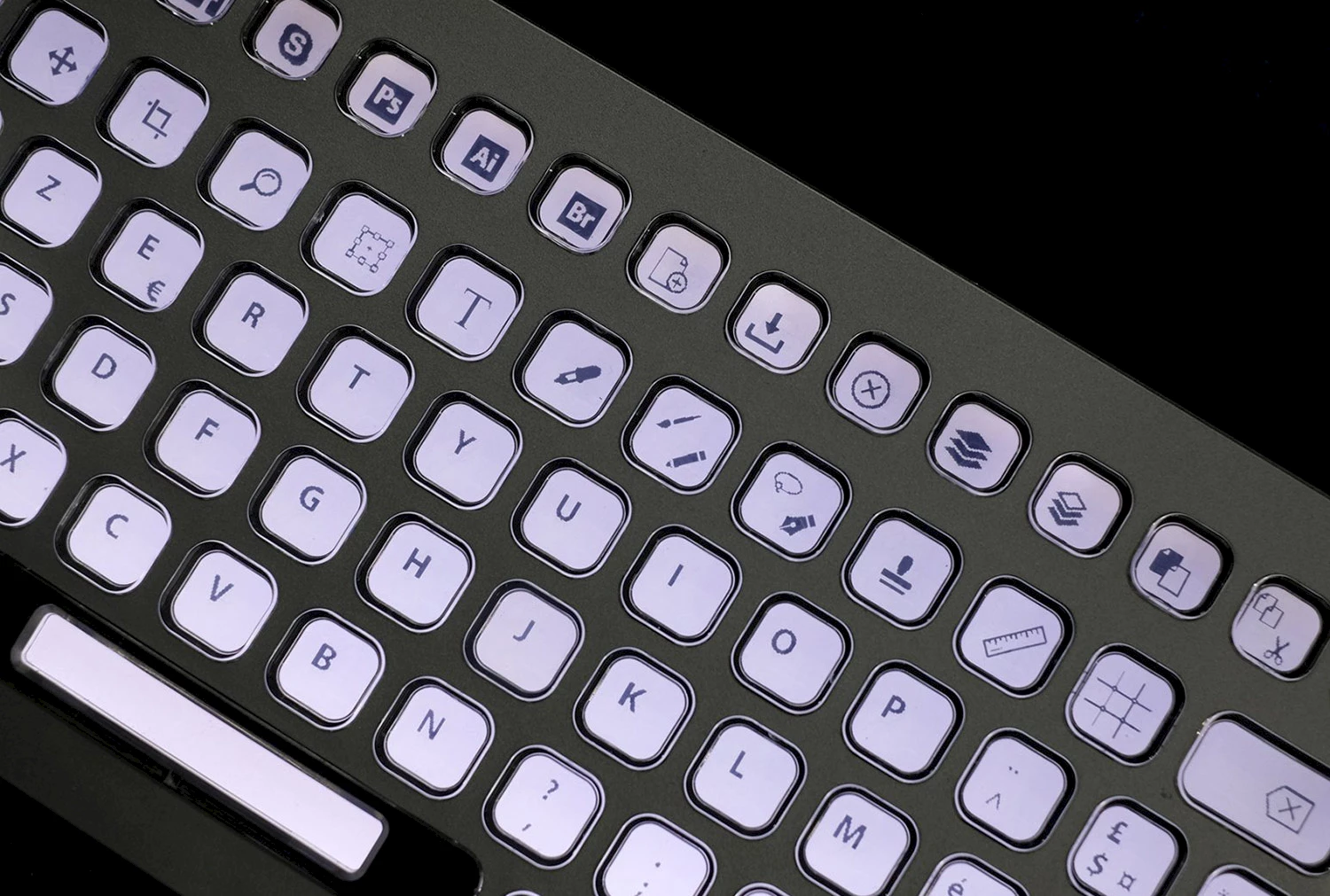
Nemeio keyboard. © Nemeio.
Some people like to have more than one keyboard, for example if you need to write in two different languages. You may also want to customize your keyboard to suit your particular needs. At the CES in Las Vegas, a French company presented an elegant solution: on the Nemeio mechanical keyboard, each of the 81 keys is equipped with an electronic ink display, which makes it completely customizable. On the fly, you can switch from a qwerty keyboard to a Japanese or an Arabic keyboard. You can also map your favorite software feature to any key. Because you can adjust the keys’ display size and contrast, this keyboard is also a welcome aid for the seeing-impaired.
The Bluetooth wireless keyboard is equipped with USB-A and C ports, and buttons to adjust the brightness and to switch from one mapping to another. Its size is 304 x 179 x 11 mm with a weight of 600 grams. The battery life has not yet been disclosed, nor the price (about 300 to 500 USD.) If all goes well, the product should be available next summer.
⇨ Circuit Breaker, “Nemeio’s E Ink keyboard lets you customize every key.”
Alienware’s Area-51m
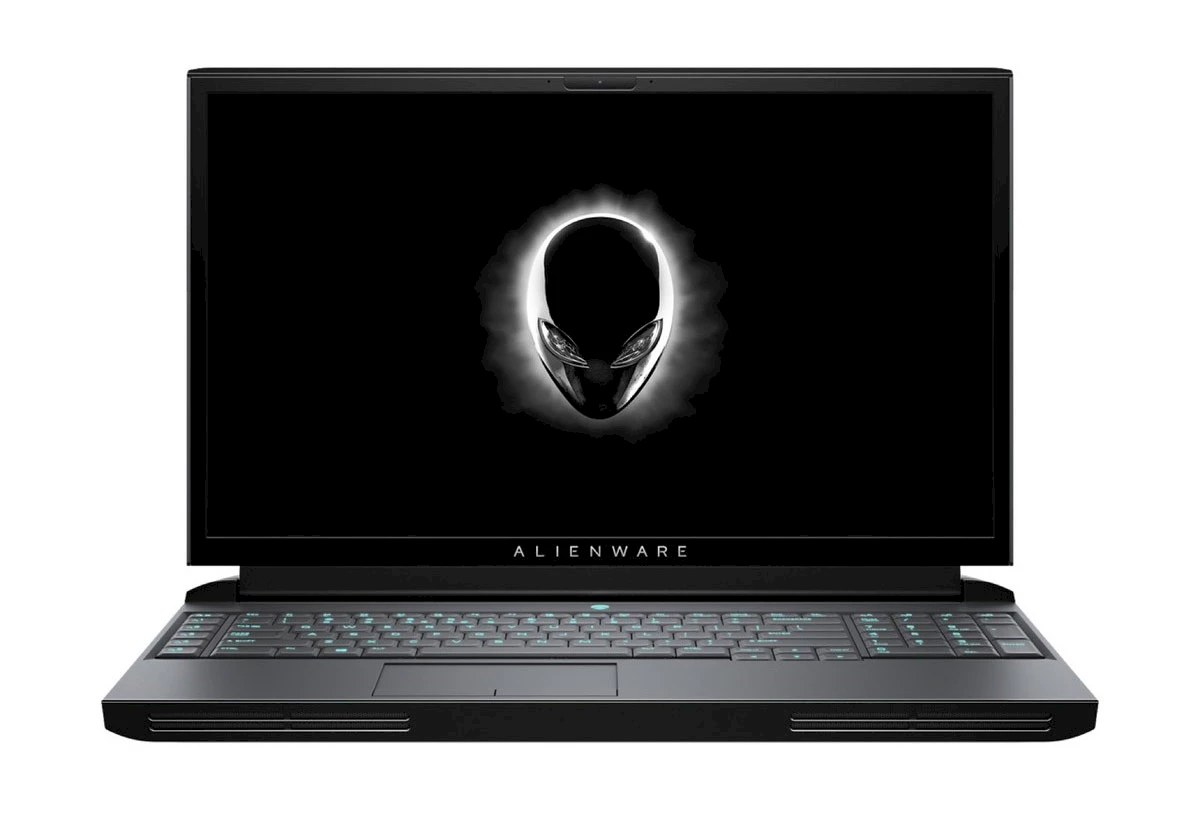
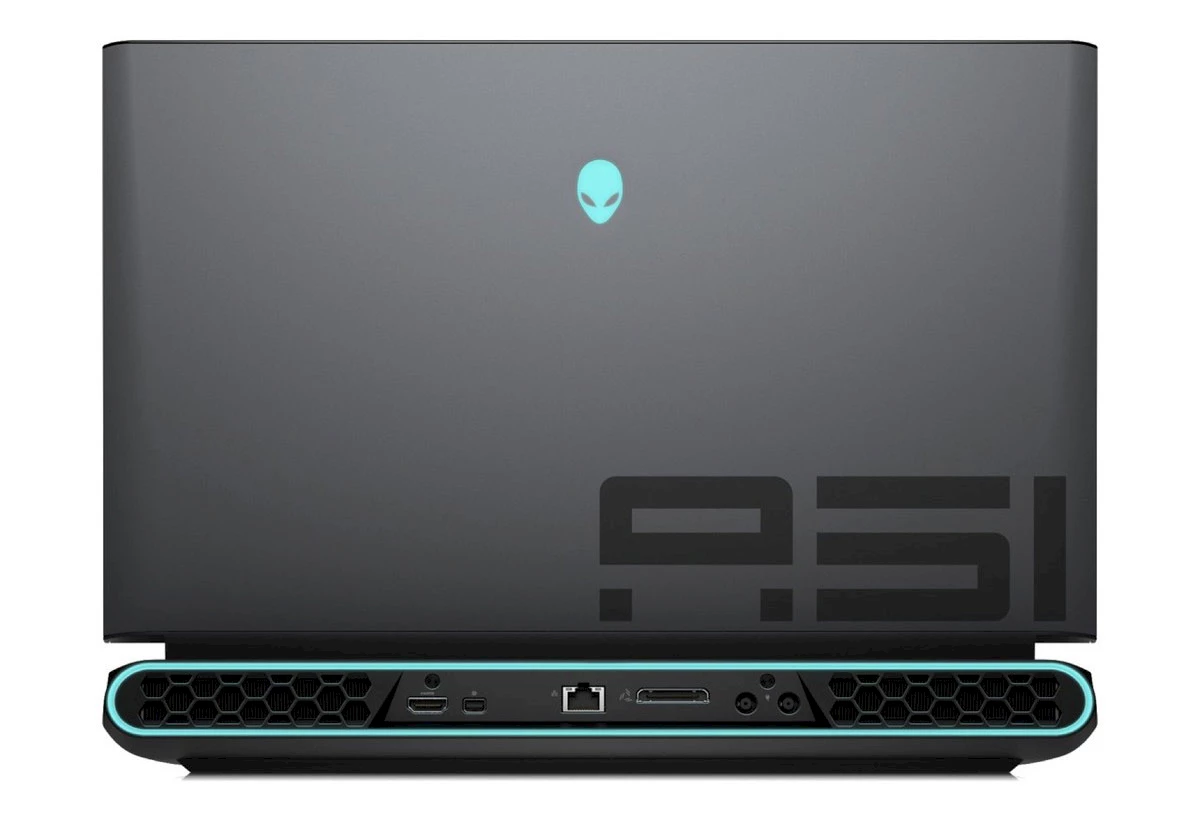
Area-51m. © Dell.
Area-51m, unveiled at CES in Las Vegas, is going for the gamers’ hardware dream: a game-oriented laptop that lets them swap out the processor (CPU), the graphics card (GPU), the storage (HDD) and the memory (RAM). In short, a laptop that offers all the flexibility and scalability of a desktop computer. In addition, the internal architecture has been designed specifically to facilitate the disassembly / assembly of various components. However, its autonomy is not great and its weight is significant (nearly 4 kg), which is certainly not the ideal computer to use while traveling by train or by plane. Area-51m needs to stay close to a power outlet. Dell’s subsidiary does not yet know if there even is a market for the machine; this is just a feeler.
The Area-51m is of course fully customizable upon order. While you can stump up 2,550 USD to get in the ballpark (which gets you an Intel Core i7-8700 processor, Nvidia RTX 2070 card, 1TB hard drive, 8GB DDR4 memory and a 1080p / 60Hz screen), prices quickly climb to 4,000-5,000 USD if you are a bit demanding in terms of performance. Available January 29th.
⇨ The Verge, “The Alienware Area-51m is a full-fledged desktop disguised as a laptop.”
Intel’s family plan
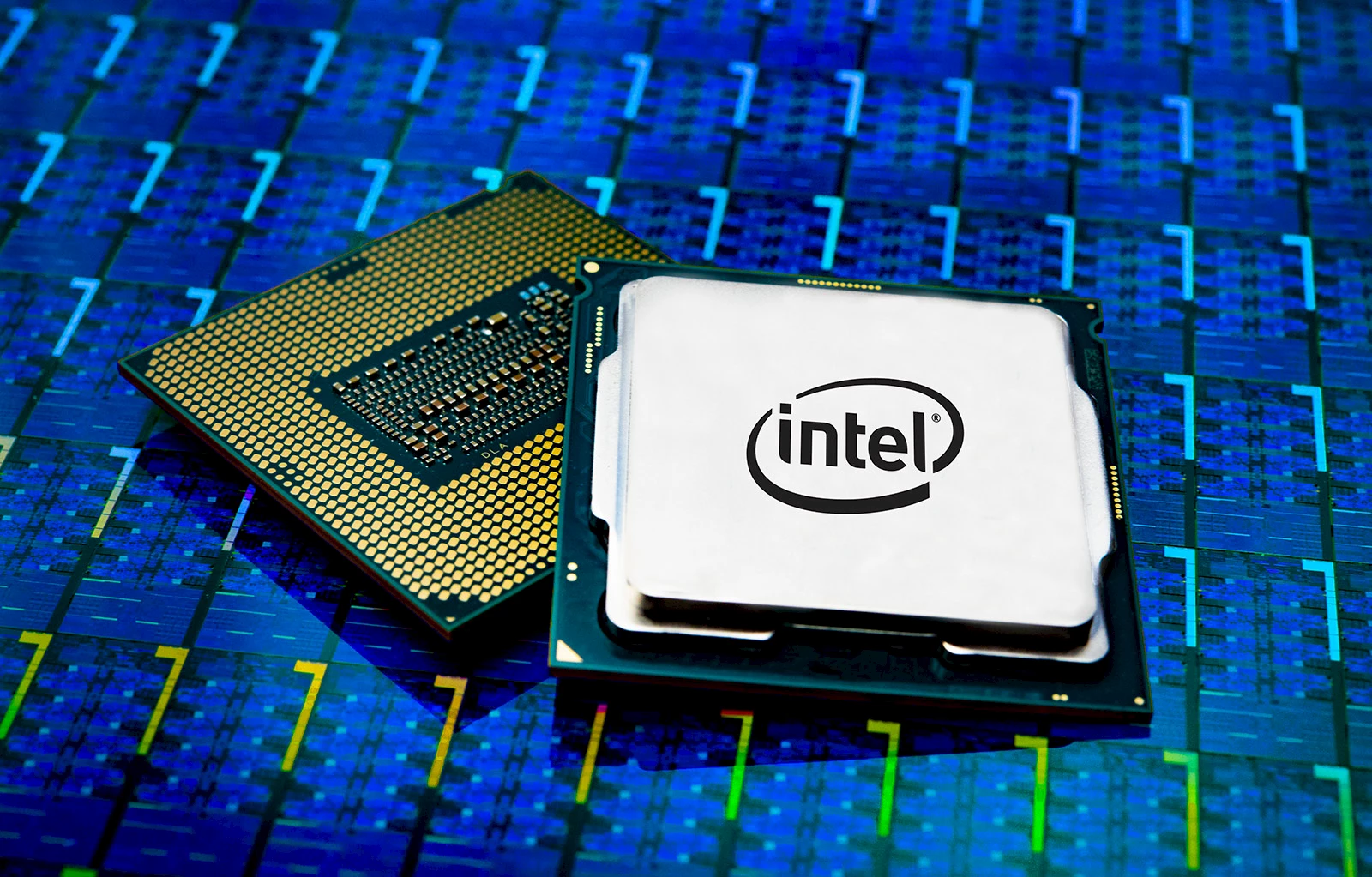
9th Gen. © Intel.
With the long awaited ramp-up of its 10nm production, Intel was finally able to present some exciting new features at CES Las Vegas that will come out in 2019. The major announcement was the release of Ice Lake chips based on the new Sunny Cove microarchitecture. Look for laptops with Ice Lake chips to hit the market this year. This family of processors is an important development for Intel after years of delays and difficulties with 10nm technology. The company originally planned to introduce the 10nm processors, then dubbed Cannon Lake, in 2016.
In addition, Intel has launched new 9th generation processors for desktops, still engraved in 14nm, including a Core i9 chip (8 cores, 16 threads), which the company modestly describes as “the best gaming processor in the world.” These new processors available in 5 flavors will deliver at the end of January. Intel also introduced Lakefield, a new family of products that leverages Foveros technology to stack components for compact, high-performance systems-on-a-chip.
⇨ Ars Technica, “Intel sets out its plans for 2019: Ice Lake, Lakefield, and Project Athena.”
We all need a Lovot to love

Lovot. © Groove X, Inc.
All Lovot wants is to be loved. And to this end, Kaname Hayashi, a former developer of the humanoid robot Pepper, made the robot irresistible, like a hybrid between a stuffed penguin and a teletubby baby with large dreamy eyes. It doesn’t even speak, it just makes cute cooing sounds. Its only purpose is to elicit affection. You can’t use it to place an order on Amazon with Alexa. It doesn’t monitor your home. “This robot won’t do any of your work. In fact, it might just get in the way,” Hayashi told Bloomberg. “Everything about this robot is designed to create attachment.” Lovot can be pre-ordered now and delivery is expected by the end of 2019. The price is 349,000 JPY (3,220 USD, 4,270 CAD) with a monthly fee of 9,980 JPY (92 USD, 122 CAD). And we say that you can’t buy love...
⇨ The Verge, “Lovot is the first robot I can see myself getting emotionally attached to.”
Miliboo’s Smart Sofa
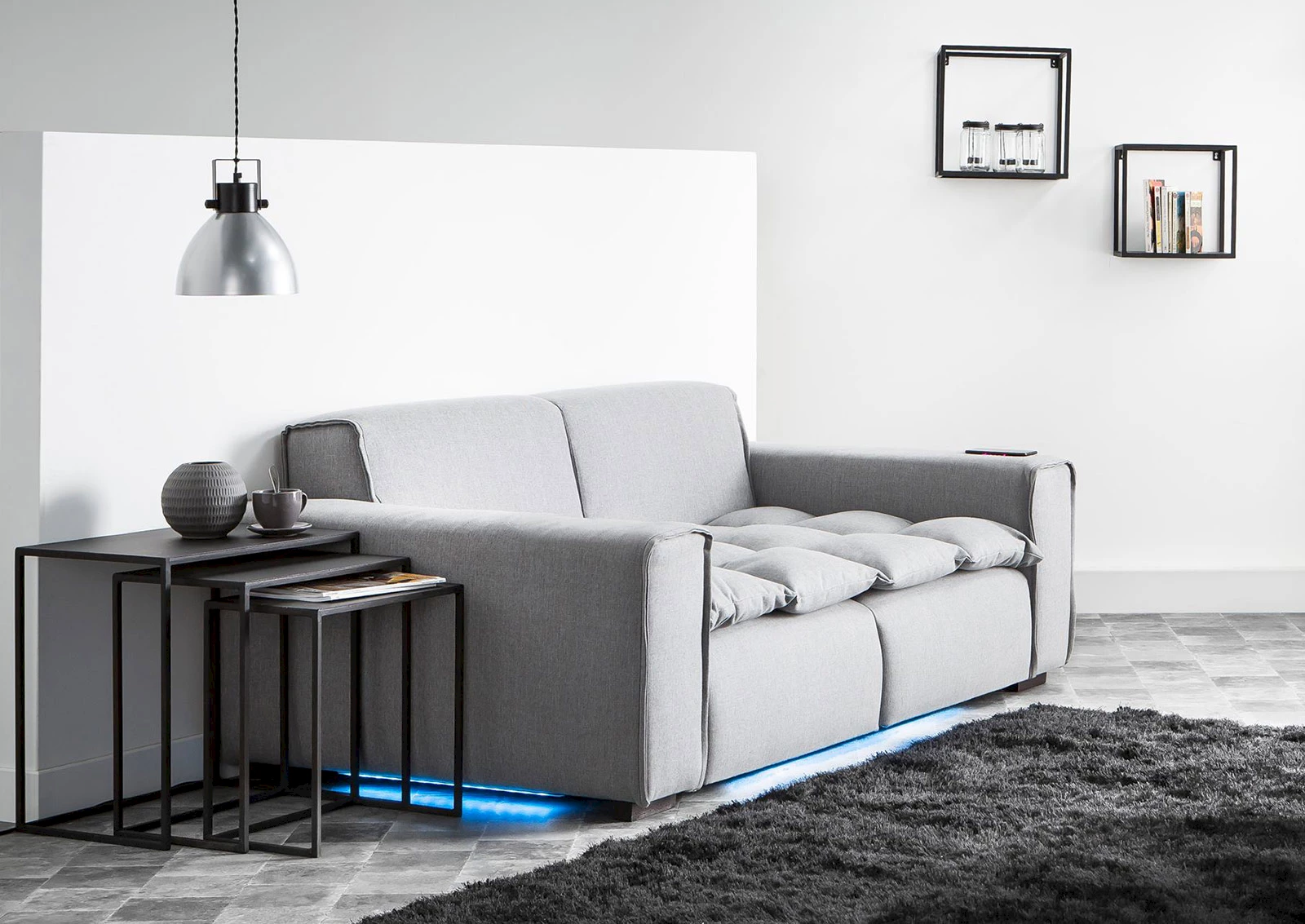
Smart Sofa. © Miliboo.
Designed by a French company, the connected sofa that we were all waiting for, that vibrates, lights up, activates Alexa, and recharges your phone, was presented at the latest CES in Las Vegas. The Smart Sofa uses several technologies, including Bluetooth, WiFi and Android OS. The sensory and immersive system is recessed under the couch and includes a vibrating seat, adjustable lighting with LED lamps, two speakers, a subwoofer and an amplifier. Google Home and Amazon’s Alexa smart assistants are integrated into the armrest, which also contains the Qi wireless phone charger. The price of the Smart Sofa starts at 2,340 USD for a loveseat, 3,050 USD for a three-seater and 3,500 USD for a four-seater.
⇨ Miliboo, “Discover the world’s first smart sofa.”
